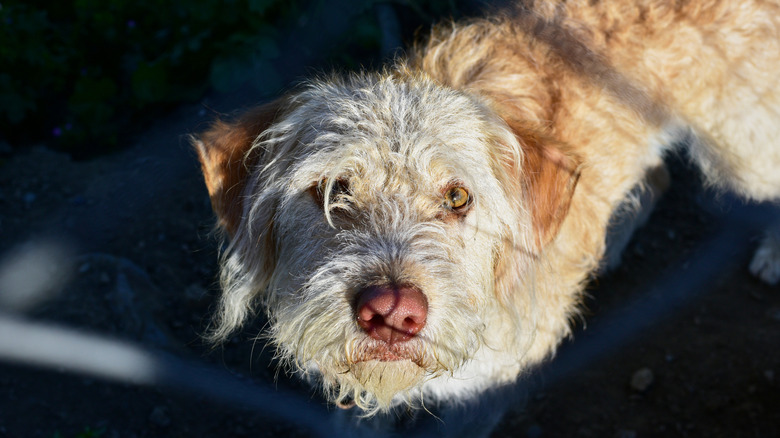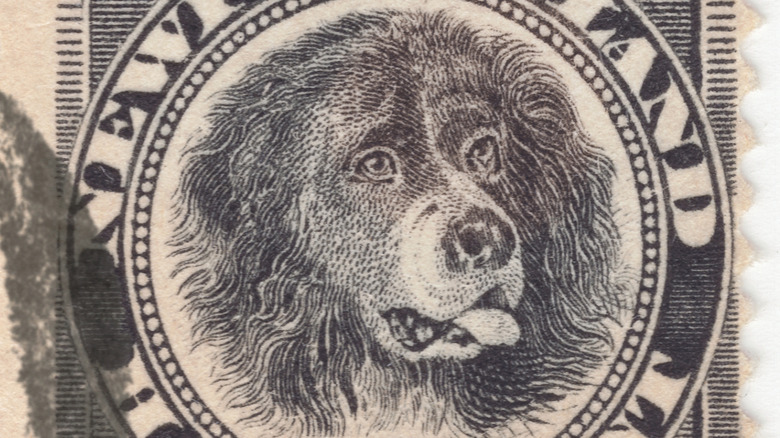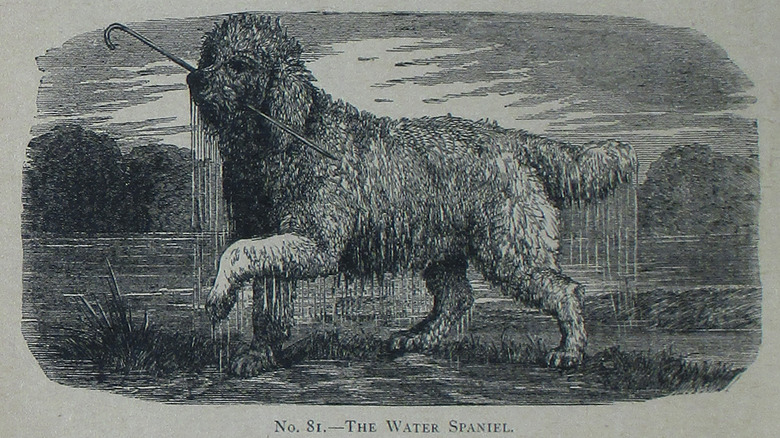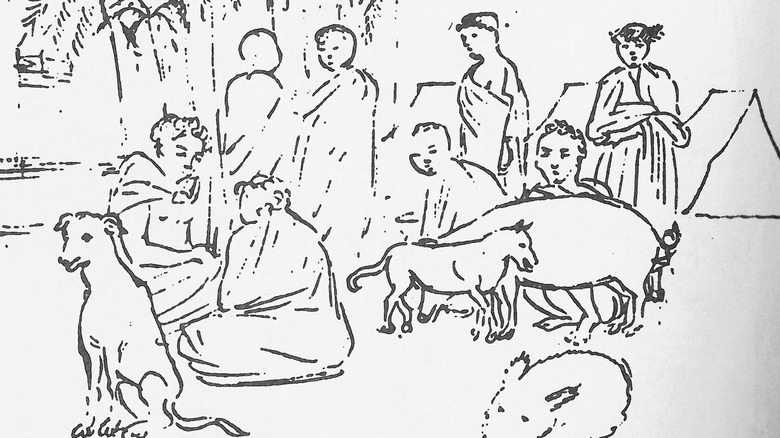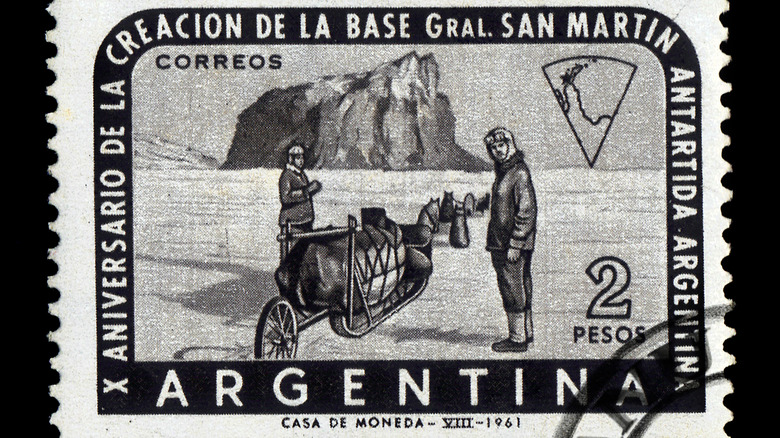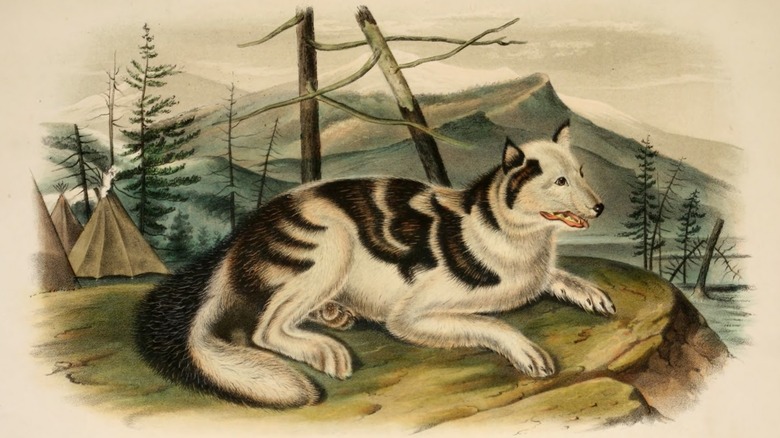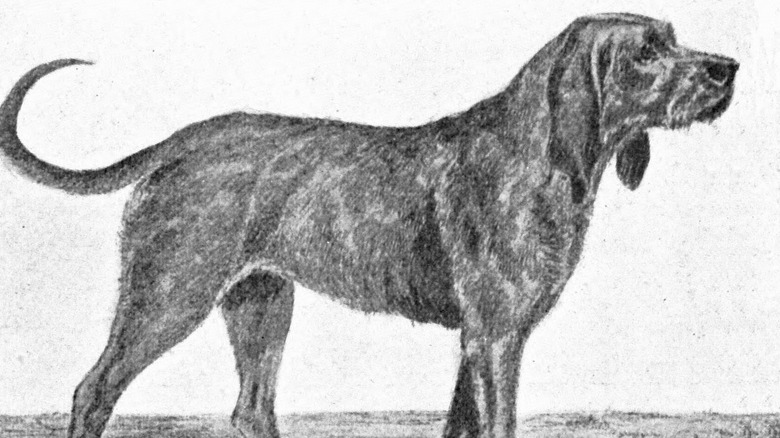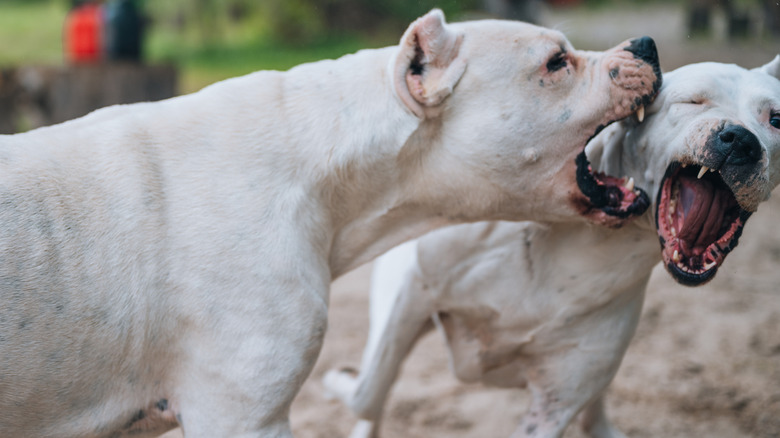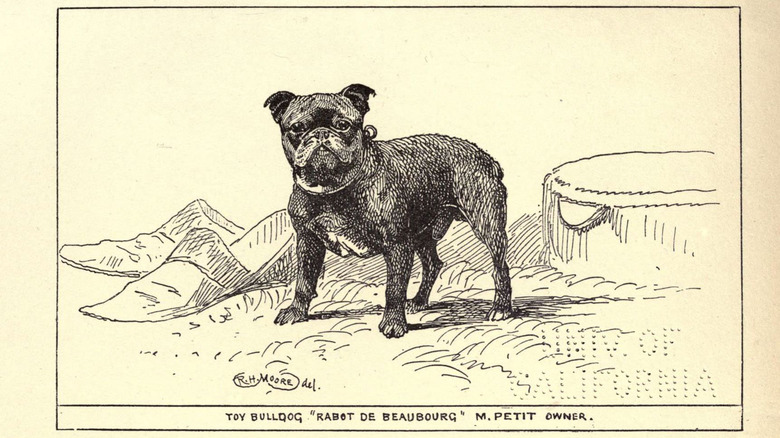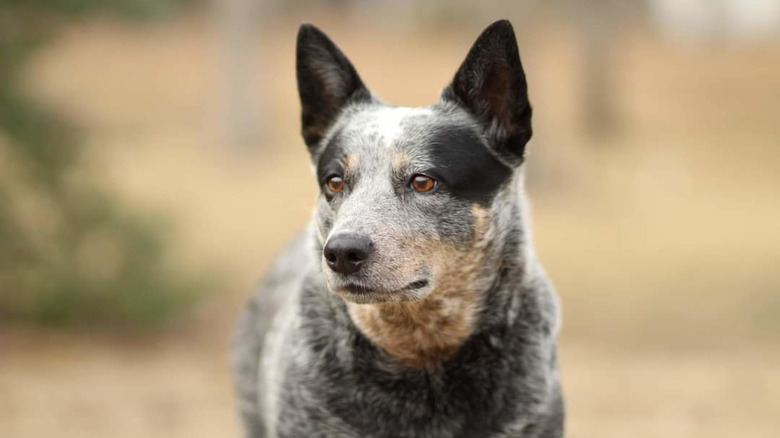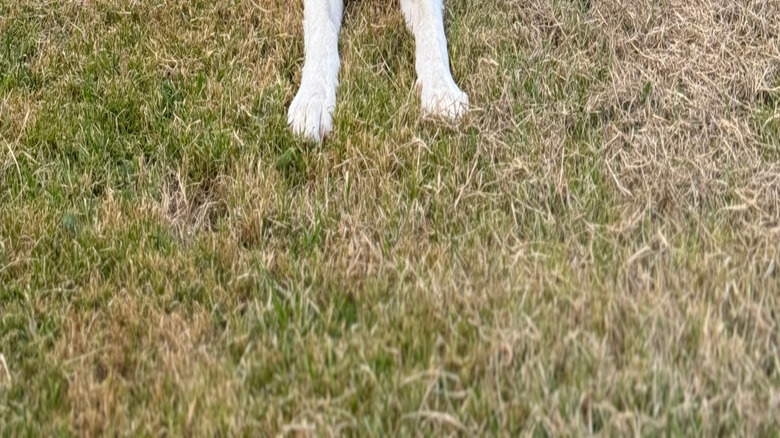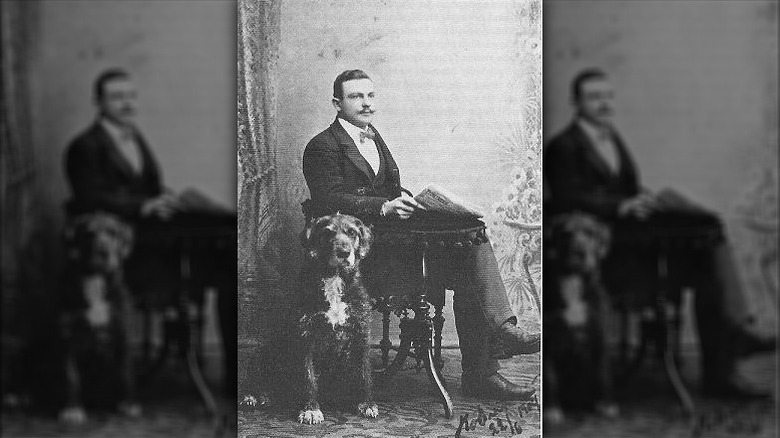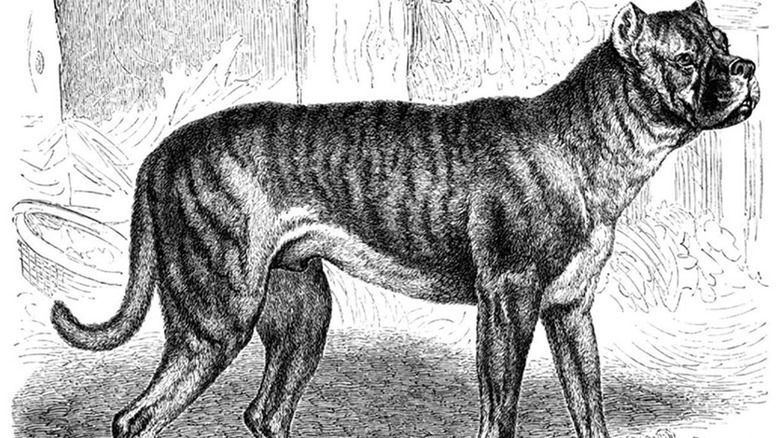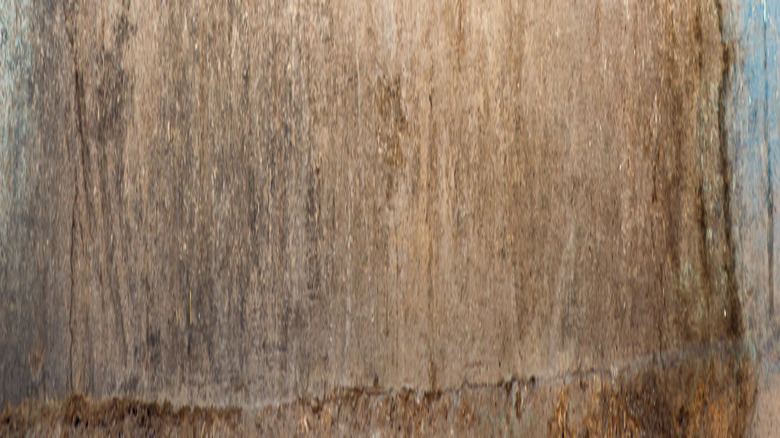14 Dog Breeds That Don't Exist Anymore (& Why)
Those with a profound love for nature's creations and a particular passion for dogs face the sad reality that many canine breeds have disappeared over the centuries. Conservation hasn't always been a priority; even as awareness of such issues has become more prevalent in the digital age, it's still a problem many breeds face. For example, some breeds, such as the otterhound, are considered vulnerable, and their numbers point to potential extinction.
The reason for canine extinction can vary, with some breeds being integrated into others, while some breeds have lost their utility due to cultural shifts. Still, the following canine breeds fizzled out for some unique reasons, with some facing an inevitable decline and others presenting a tragedy and failure of humanity to provide support. History proves to be seldom on the side of nature, and these specific breeds found themselves falling out of favor or care. Still, we can see remnants of the past in some modern-day dogs, but these are canines that no longer exist — and the reasons why.
St. John's water dog
The St. John's water dog was a Canadian-bred canine considered the ancestor of the Newfoundland and the Labrador retriever, which naturally comes with both advantages and disadvantages. These solid and dapper dogs were known for their thick, muscular build and tuxedo coating (mainly black with white highlights). This breed enjoyed swimming, and Canada's frigid waters were no match for its luxurious coat. The St. John's water dog was believed to have been bred from other working dogs of English, Irish, and Portuguese descent, developing over the 16th and 17th centuries. These loyal and trusty pups made their living as retrievers on the outports of the Canadian East Coast, helping fishermen catch escaped fish on the water and hunt birds on the land.
This pooch was a beloved pet of the people of Newfoundland, but due to government intervention, the dog fell out of favor. In the 19th century, the province switched its focus to sheep farming. Because of the breed's unwanted "taste" for herd animals, the government levied a heavy tax to limit their numbers. In the 20th century, outport culture declined, further hurting water dogs. The last-known St. John's water dogs are believed to be a pair of males who died in the 1980s.
Paisley terrier
Though it might not be one of the most popular terrier breeds nowadays due to being extinct, the Scottish paisley terrier was quite the showstopper, striking a similar appearance to the skye terrier but with a slightly more compact form and different coating. While the terrier was a natural at dealing with vermin, this long breed was more favored as a pampered pup, kept as a companion and show dog. The proud doggo was a scene-stealer on the show circuit, becoming a favorite after the Kennel Club's acknowledgment of it in 1888. Unfortunately, this popularity led to the breed's decline, as it became known as strictly a show and status dog with no utility. Broader interest in the terrier dwindled, leading to its extinction.
Given the background and lineage of the beautiful breed, there are assumptions about its temperament. Notably, to shine on the show floor, this doggo was likely intelligent, easy to train, and loyal to its owner. The canine may have had that prey drive and endearing yet occasionally stubborn personality that comes with terrier breeds. The once-prideful pooch's roots can still be observed, as its genes are believed to have been passed on to Yorkshire, silky, and Biewer terriers.
English water spaniel
Water spaniels have had a tough go, with many breed types succumbing to extinction and only three variations still in existence: the American water spaniel, the Boykin, and the Irish Water Spaniel. The English water spaniel's history is somewhat shrouded in mystery, and there's much speculation about how they came to be. Much of their origins are speculative because the canine was bred during a period without much recordkeeping. What is known is that this was a small-to-medium, multicolored-coat pup with wavy or curly fur that was used as a gun dog.
As hunting techniques developed, the English water spaniel fell out of favor. Notably, hunters began to rely on other breeds that were less gun-shy and dealt better with the noise. Once beloved for its multipurpose use, the dog fell out of favor as hunters began to rely on land spaniels to flush out game and retrievers to capture the bounty. While these dogs went extinct at the start of the 19th century, they still live on as part of the makeup and development of the beloved golden retriever and many other breeds.
Hawaiian poi dog
The few depictions of the Hawaiian poi dog we have come from art, showing it as a short-haired breed with a round body and short legs. For the native people of Hawaii, these were multipurpose companions, used as pets for children and turned into food. This breed got its name from its vegetarian diet, primarily consisting of the taro root-based dish known as poi. This feeding regimen helped fatten up the dog for consumption.
While there was a brief attempt to bring back the breed in the 1960s by the director of the Honolulu Zoo, Jack L. Thorpe, history paints a portrait of this being a dog that seemed to have its place and time. Notably, the dog was noted to be dimwitted and untrainable, and it suffered from obesity and a flattened head from its forced diet. The extinction of the Hawaiian poi dog was inevitable due to cultural shifts, which no longer held a utility for the Indigenous people.
Argentine polar dog
When conserving dog breeds, one thinks every species deserves longevity and preservation. Yet, the Argentine polar dog is an example of one breed whose purpose proved problematic and unsustainable by design. A mix of several breeds, including a Siberian husky, Greenland dog, Alaskan malamute, and Manchurian spitz, the canine was created by Argentina to help its army garner a larger presence in Antarctica.
Considered easy to breed and quick to pick up on tasks, these were climate-ready sled dogs that could travel long distances while also acting to reflect Argentina's military prowess. While these were tailored pooches, they weren't without fault, as the most common cause of injury came from infighting among packs. The 1994 Protocol on Environmental Protection for the Antarctic Treaty (PEPAT) forced the removal of the breed from the continent.
The Argentine polar dog, fully acclimated to frigid temperatures by the end of its use, couldn't thrive in warmer environments, and its aggressive nature made it undesirable as a pet. These elements led to a quick decline in its population, leading to extinction.
Hare Indian dog
The most accurate description of the Hare Indian dog came from naturalist Sir John Richardson, who was the first to record this peculiar breed among the Slavey people of Northern Canada. In his 1829 book "Fauna Boreali-americana," Richardson describes their closeness to the coyote: "The size of the Hare Indian Dog is inferior to that of the prairie wolf [coyote], but rather exceeds that of the red American fox. Its resemblance, however, to the former is so great, that, on comparing live specimens, I could detect no marked difference in form, (except the smallness of its cranium,) nor in the fineness of the fur, and arrangement of its spots of colour" (via Retrieverman).
We'll never know if the breed was a domesticated coyote or a descendant of another breed, but Richardson's documentation shed much light on this astounding canine. These weren't confined pets — they existed alongside Indigenous people and aided them in pulling sleds and hunting. Their ability to climb trees proved helpful, too.
The Hare Indian dog was a faithful companion who would trek for miles with humans and even attack other coyotes. However, time wasn't kind to this breed, and it's speculated that they disappeared for one of two reasons: the introduction of firearms and changes to the way Indigenous people hunt. Otherwise, this once-remarkable dog may have just melded into the mongrel population in time, given its independent nature.
Chien-gris
Most recognition of the Chien-gris comes from its prominence in France during Medieval times. It was a prized scent hound of royalty between 1200 and 1470. Not much is known about the breed, particularly regarding its origins. Descriptions of the Chien-gris say it was a medium-to-large dog (20 to 27 inches in height) with a wiry coat that was predominantly gray but highlighted by red, tan, or white spots.
The reason for the Chien-gris becoming extinct comes down to the preference of royalty, with the once-famous dog pushed aside in favor of its eventual descendants. Monks also favored crossbreeding the Chien-gris with the bloodhound, further leading to a decline in purebreds. Still, the Chien-gris is essential to developing many modern breeds, particularly griffons. Other popular dogs that owe their lineage to the Chien-gris include the German wirehaired pointer, Weimaraner, and the basset fauve de Bretagne. (Read here for more information and breeding facts about wirehaired pointing griffon dogs.)
Córdoba fighting dog
The Córdoba fighting dog's name should allude to its purpose and demeanor. Indeed, this canine was bred to fight other dogs and animals. Described as a cross between a mastiff and a bulldog, this would have been an instantly recognizable breed given its intimidating size (approximately 25 inches tall and weighing between 55 and 90 pounds) and the cropping of its ears to ensure it wouldn't be torn off in conflict. Originating during Argentina's colonial period (the early 16th century), this canine came from focusing solely on mixing breeds that show overly aggressive tendencies.
This temperament led to difficulties with breeding, as males and females were more prone to fight than to mate. These also weren't pets and, despite the need for space given their physicality, were likely kept in confined spaces for safety reasons. With economic changes and dog fighting becoming illegal in 1954, there was a loss of interest in breeding the dangerous pooch. Remnants of it still exist, as there was an attempt to make the breed less aggressive, and crossbreeding began to de-escalate its violent tendency, leading to the Dogo Argentino (pictured above). Still, this breed reflected a darker side of dog ownership that's better left in the past.
Toy bulldog
The bulldog's popularity as a pet in Britain led to interest in a smaller-sized version that would be more suitable for smaller spaces and take on more of a companion role, using pugs and terriers to reduce their size. Weighing around eight pounds, compared to the upward of 40 to 50 kg. of the famous English bulldog (not to be confused with the Old English bulldogge), these mini pooches became popular as show dogs and working-class pets in the 19th century.
The canine continued to find notoriety when the Industrial Revolution saw many Englishmen immigrating to France, where it experienced a resurgence in popularity. The location change saw a decline in the population in Britain, and the breed slowly became integrated with other French breeds until it disappeared entirely. It's considered the progenitor of the French bulldog, and it's speculated it may have helped develop the Boston terrier. There are still attempts to create toy bulldog breeds, but the original English toy bulldog is extinct. There are undoubtedly ethical concerns regarding breeding dogs to be fashionable, and the American Kennel Club doesn't recognize recent iterations of the toy bulldog.
Halls heeler
The extinction of the Halls heeler is a bit of an oddity in discussing extinct dog breeds, with its creator ultimately being responsible for its demise. Created by Australian cattle-ranch owner Thomas Hall in the early 1800s, the canine was developed as drovers who could meet the work and climate demands of the outback. Hall imported collies (different from the beloved ones we know today) and bred them with dingos to create a highly versatile working dog. The documentation of this breed is minimal, with some excerpts existing in "The Hall Family Chronicles" and some accounts coming from Robert Kaleski, the dog breeder who actually gave this breed its name.
The Halls heeler proved to be a massive success for the cattle rancher, giving him an advantage over others and allowing him to grow his business. The dog was highly sought after by other cattle ranchers, but given the value to Hall, he kept the "formula" and canines to himself to keep the upper edge over the competition. With his passing in 1870, the Halls heeler began to fall out of favor, with the man taking his secret breed to the grave. Still, the Halls heeler has left quite a legacy, as the pooch would set the groundwork for the hardworking Australian cattle dog (pictured above).
Welsh hillman
Little is known about the origins of the Welsh hillman, but it's speculated that it was a landrace, meaning it developed in isolation without human intervention. Believed to have been "fast and fearless," according to National Purebred Dog Day, the breed was taller and slimmer with wiry hair and a varied-colored coat. Believed to be the last witness of the Welsh hillman, Barbara Carpenter chronicled what little we know about the pooch's appearance and the tragedy of the last living specimen dying out. Jess, who passed in 1990, was spayed by its owner, who was unaware of the rarity of the faithful companion they'd bought.
The Welsh Hillman saw a decline because it fell out of favor, with many switching to the swift border collie — if you haven't read up on how fast a border collie can really run, you're missing out on a good time — as the working dog of choice. Historically, many Welsh breeds have suffered from a lack of conservation efforts, with Wales once being remote and the preservation of its unique canines not prioritized. This sentiment toward area-specific breeds led to the extinction of others, such as the Welsh grey, Welsh black-and-tan, and the bob-tailed Welsh sheepdog, though there have been claims that the latter still exists. These breeds would eventually fold into the Welsh sheepdog (pictured above), maintaining the heritage of these sturdy pooches.
Dalbo dog
The chronicling of the Dalbo dog, sparse but with a few notable mentions in historical accounts and interviews with locals, paints a pretty remarkable picture of this giant breed, which is believed to have had a shoulder height of around 30 inches. Used primarily as a protector of stock, herd cattle, and family, they were considered solid and powerful dogs that also acted as beloved pets. A few photos of the Dalbo exist, including one of a dog named Bella who was considered the last of her kind (pictured above). From the rare pictures and descriptions that exist, people have drawn comparisons to the Estrela mountain dog and Leonberger breeds.
While the Dalbo was prominent in regions of Sweden and Norway until the early 19th century, it declined early in the 1800s due to many cultural and economic shifts. One was that the dog's large size made it impractical to keep, particularly because of the decline in the bear and wolf populations. After all, these were originally protector dogs. A rabies outbreak in 1854 devastated its numbers, and the following famine in Sweden, which lasted from 1867 to 1868, only led to further decline.
Bullenbeisser (German bulldog)
The first mention of the Bullenbeisser — aka the German bulldog — dates back to 370 A.D. when they were chronicled among the Assyrians in their migration from Asia to Europe. These dogs were necessary for the traveling immigrants to help protect them and provide food with their hunting abilities. The Bullenbeisser continued to develop, acting first as a protector for the German people and then as an eventual full-time hunting companion. Yet, much of the Bullenbeisser's fame comes from being a beloved combat dog of the Holy Roman Empire and a working companion for farmers in the 800s.
The dog's popularity would decline along with the Holy Roman Empire, as feeding and caring for the canines became cumbersome. As the region shrank, housing became denser, and less farmland was available. This led to the people favoring more compact companions for protection — notably the Brabanter, a smaller type of Bullenbeisser. While Bullenbeissers went on to become extinct, work has been done to bring back Brabanters. Developed in the late 1990s by Todd Tripp, the banter bulldogge is an attempt to recreate the Brabanter. Moreover, the modern boxer's genetic make-up is 70% Bullenbeisser, and the great dane has about 50% of its ancestry tied to the once-proud protector, too.
Abyssinian sand terrier (African hairless dog)
These dogs originated in Ethiopia (previously Abyssinia) and are also known as African hairless dogs. This medium breed, which weighed between 20 and 40 pounds, lived up to its name, with the only hair covering it coming from a tuft at the top of its head. These dogs were considered semi-wild and were more known to follow humans than aid them. There are remaining specimens of this dog, including a display at England's Natural History Museum at Tring, and firsthand accounts of the dog breed in Africa. However, there's still some mystery behind this canine.
Some believe that the Abyssinian sand terrier was used to help develop other hairless breeds, including the Chinese crested dog, yet this remains speculative. There's also a belief that this dog may not be extinct. Though currently listed as such, pictures of the dog have supposedly surfaced, with the above photo from Linda Hughes Photography considered a possible living sample of the once-thought-extinct breed. Ultimately, the Abyssinian sand terrier shows that our understanding of dog breeds is still limited in scope, and there may still be a unique pooch waiting to be rediscovered.
With all of this history settled, check out these 20 pictures of big dogs that will make you say, "Holy smokes!"
